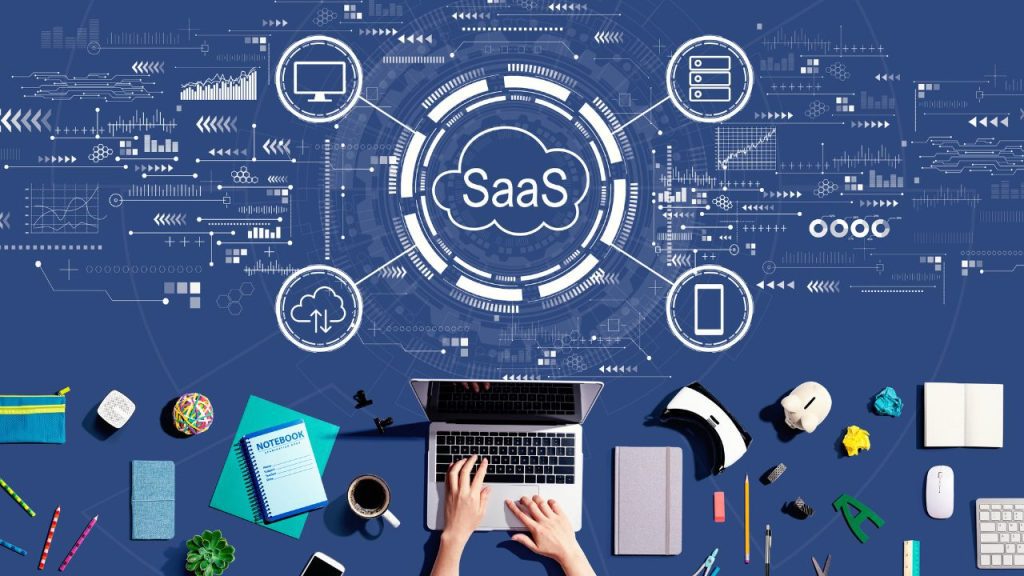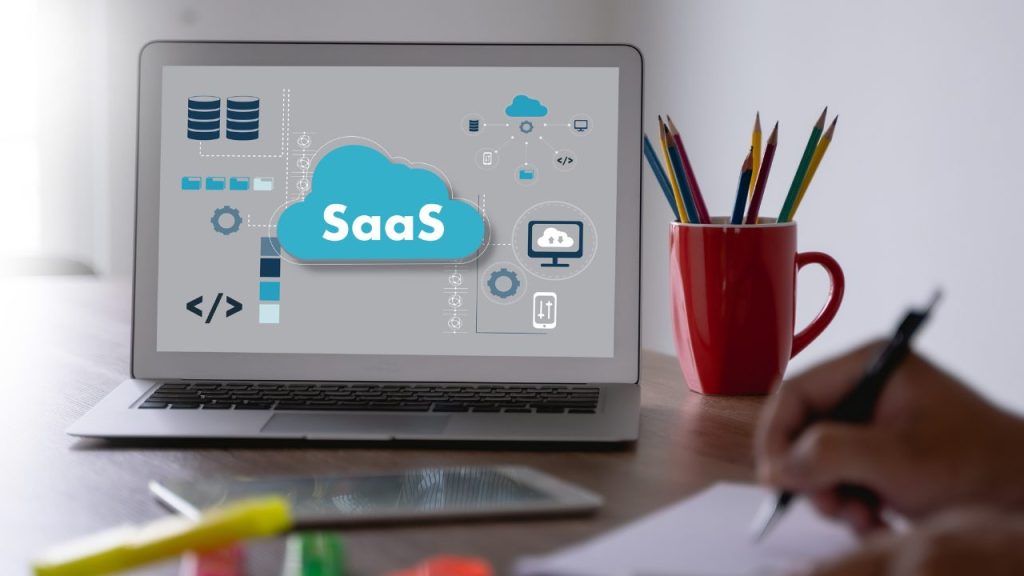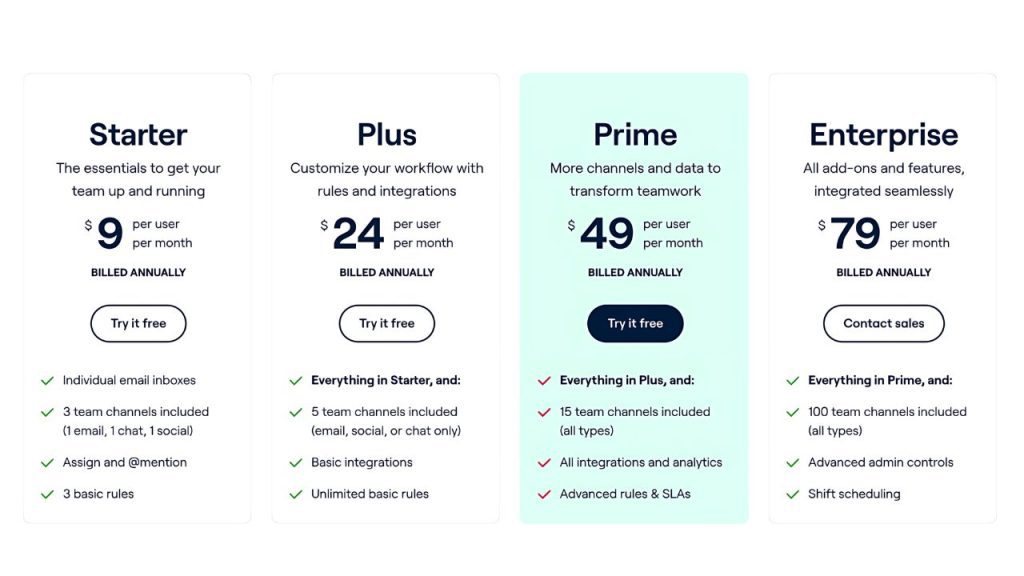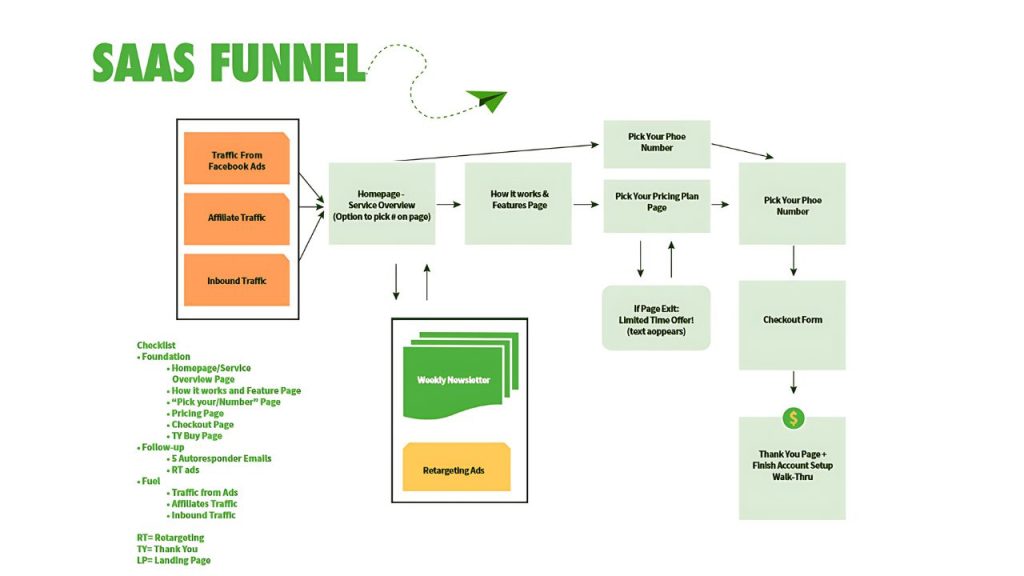Congrats, you SaaS-crazed entrepreneur! You want to ride the tidal wave of subscription software to your first $100k month. We get it – the siren song of recurring revenue has you dreaming of Lambos on the beach. But slow your roll.
Building a kickass product that prints cash requires more than an IDE and some Red Bull. Before you submit that 2-week notice, let’s chat funnel metrics, customer lifetime value, and why your MVP shouldn’t suck. Strap in, because we’re about to drop some truth bombs on how to launch a money-printing SaaS beast in 2024.
How to Start a SaaS Business in 2024

The 6-Step Program
Hey, you crazy kid, you really wanna start a SaaS biz in ‘2024? Buckle up and get ready for a wild ride. This ain’t your grandpappy’s lemonade stand business.
1. Find a Painful Problem
First things first, you gotta find a festering problem that’s just begging for a solution. People ain’t gonna pay for fluff – they need something that’ll make their lives easier like a Snuggie for their soul.
2. Solve It with Software
Once you’ve identified the issue, it’s time to get coding. Build some software that solves that painful problem like a knight in shining 1s and 0s. Don’t worry if it’s not perfect – we’re aiming for a minimum viable product here.
3. Price It Right
Now for the fun part – figuring out how to milk this cash cow. Price it too high and you’ll scare folks off. Too low and you’re leaving money on the table. Find that sweet spot using ✨market research✨.
4. Marketing Madness
You’ve got the solution, now you need some folks to buy into it. Slap on your marketing hat and start spreading the word like butter on hot toast. Social media, ads, email blasts – leave no digital stone unturned.
5. Scale Up, Buttercup
If all goes well, the customers will start rolling in like tumbleweeds. It’s time to scale that operation up and really start raking in the dough. Hire some help, and invest in better tech – the world’s your oyster now.
6. Rinse & Repeat
Once you’ve got the process down, it’s just a matter of keeping that well-oiled machine running. Improve the product, stay on top of marketing, and watch those revenue streams flow in like a mighty river.
The SaaS road may be long and winding, but stick to these steps and you just might make it to that $100k/month Promised Land. Or you could end up living in a van down by the river – hey, no risk, no reward, right? Now get out there and start building your SaaS empire!
Validating Your SaaS Business Idea

Let’s get real
You have a brilliant idea for a SaaS product that will change the world. That’s great! But before you quit your job and start racking up credit card debt, let’s get real for a second.
The harsh truth is that most business ideas never make it past the idea stage. And even fewer become profitable ventures. So how can you avoid wasting months or years pursuing a pipedream?
Putting your idea to the test
The key is validating your idea before investing too much time and money into it. This means putting your assumptions to the test and gathering real-world feedback and data.
Don’t just ask your friends and family if they’d use your product – they’ll probably just nod and smile to avoid hurting your feelings. Instead, you need to find people in your target market and gauge their level of interest.
One effective approach is creating a simple landing page that explains your product concept. Drive some traffic to it through ads or other channels. If hardly anyone signs up, that’s a huge red flag that demand may be lacking.
Where there’s data, there’s truth
Another great way to validate is by looking at industry data and trends. Is the market you’re targeting growing or shrinking? How much are customers currently paying for similar solutions?
Don’t just assume there’s a massive untapped opportunity. Dig into the hard numbers and facts. Trustworthy data from reputable sources will give you a reality check on whether your idea is truly viable.
At the end of the day, validating upfront may feel like more work. But it beats investing your life savings into building something no one actually wants or needs. A little prevention goes a long way in the cutthroat world of SaaS.
Building an MVP for Your SaaS Startup

So You Want to Build the Next Unicorn?
You’ve got the next billion-dollar idea for a SaaS platform that’s going to make you filthy rich. Awesome! But let’s not get ahead of ourselves here, chief. Before you start dreaming of early retirement on a private island, you need to actually build the darn thing first.
And no, I’m not talking about some bloated, feature-crammed monstrosity right off the bat. That’s a one-way ticket to burning through your seed funding before you can say “pivot.” We’re talking about an MVP – a Minimum Viable Product.
The Lean, Mean MVP Machine
An MVP is the leanest, most barebones version of your product that still delivers value to users. It’s like the Charlie Sheen of software – just enough to get the party started without all the crazy extras (for now).
The goal? To get something out there quickly, gather feedback from real users, and iterate like a mofo based on what they love and hate. It’s all about validating your assumptions and figuring out the essentials before investing a fortune.
Where to Start? Anywhere but Your Basement
The first step is nailing down the critical features and user flows that define your core value proposition. Basically, what’s the absolute minimum someone would pay for? Ditch the shiny doodads and focus on the marquee functionality that solves a real problem.
From there, map out some wireframes or mock-ups to visualize the user experience. Keep it simple, but don’t half-ass it either. You want something you can actually test with human guinea pigs.
Release Early, Release Often
Once you’ve got a bare-minimum working prototype, get that sucker in front of people ASAP. Closed beta, open beta, your neighbors – anyone who’ll kick the tires. Observe how they use it, what trips them up, and most importantly – what they’d be willing to pay for.
Use that feedback to rapidly iterate, adding only what’s essential based on actual user demand. Rinse and repeat until you’ve got an MVP so tight, you could bounce a quarter off that thing.
From there, it’s all about doubling down on what’s working while exploring ways to expand the offering over time. But always be shipping, always be iterating. That’s the MVP mindset, baby!
Acquiring Your First SaaS Customers

Listen up, my friend. You’ve built the next big SaaS thing and it’s time to get those hard-earned bucks rolling in. But acquiring your first customers? That’s a whole different ballgame.
The Struggle Is Real
You’ve poured your blood, sweat, and tears into this digital masterpiece, only to face the harsh reality – no one knows it exists! The internet is a vast, crowded place, and your SaaS is just a tiny fish in a massive digital ocean.
But fear not, for I bear good tidings! With some clever tactics and an unwavering spirit, you can make those first customer acquisition waves.
Become a Master Networker
Networking is the name of the game when it comes to getting your first SaaS customers on board. Attend industry events, join online communities, and shamelessly plug your creation to anyone who’ll listen.
You never know who might be your first big break. Build relationships, offer value, and don’t be afraid to ask for introductions or referrals. A well-placed word from the right person can do wonders.
Unleash the Power of Social Media
In today’s world, social media is your best friend when it comes to customer acquisition. Craft a solid social media presence and engage with your target audience. Share valuable content, offer sneak peeks, and don’t be afraid to get a little cheeky with your promotions.
But remember, social media is a two-way street. Engage with your followers, respond to comments, and build a community around your SaaS. After all, people buy from people, not faceless corporations.
The Art of the Free Trial
Nothing hooks ’em like a free taste of the good stuff. Offer a generous free trial period and make it as frictionless as possible for potential customers to sign up. Once they experience the magic of your SaaS, they’ll be hooked, and converting to paid subscribers will be a breeze.
Just be sure to follow up and nurture those free trial users. A little personalized attention can go a long way.
Don’t Forget the Old-School Hustle
While digital tactics are essential, don’t underestimate the power of good old-fashioned hustle. Pick up the phone, send personalized emails, and hit the pavement if you have to. Sometimes, a little human touch is all it takes to seal the deal.
Remember, acquiring your first SaaS customers is a marathon, not a sprint. Stay persistent, stay creative, and most importantly, stay hungry. With the right mindset and a little elbow grease, you’ll be swimming in customers before you know it.
Pricing Your SaaS Product for Maximum Revenue

Behold the Power of Pricing
Pricing is the lifeblood of any SaaS business. Get it right, and you’re swimming in cash. Get it wrong, and…well, let’s not go there. The magical pricing sweet spot is the holy grail that every founder chases.
Goldilocks and the Three Pricing Tiers
Too low, and you’re leaving money on the table (not to mention devaluing your product). Too high, and customers will run for the hills faster than you can say “overpriced”. But get it juuust right? That’s when the revenue streams start flowing.
The trick is finding that perfect Goldilocks zone – not too hot, not too cold, but just right. Easier said than done, of course. But with some savvy pricing tactics up your sleeve, you can maximize those monthly recurring revenues.
Price It Right From Day One
Here’s the deal: your pricing strategy needs to be baked into your SaaS from the very start. That’s why getting it right at launch is so crucial. Once customers are locked in, repricing becomes an uphill battle.
Do your homework on competitor pricing, but don’t just blindly copy them. Analyze the heck out of your target market’s willingness to pay. Craft different pricing tiers to cater to different segments. Test, iterate, and fine-tune relentlessly until you hit that pricing sweet spot.
Freemium: Friend or Foe?
The freemium model is a classic SaaS move – offer a free basic version to hook customers, then upsell to paid premium plans. It can be an excellent way to drive adoption. But tread carefully…
Give away too much for free, and you’ll struggle to convert those freeloaders. Restrict the free version too much, and you’ll have tumbleweed blowing through your funnel. Strike the right balance, and that freemium model could be your ticket to SaaS success.
When in Doubt, Test It Out
At the end of the day, pricing is an ever-evolving game. What works today might not work tomorrow. The most successful SaaS founders are masters of A/B testing, constantly experimenting to optimize their pricing.
It’s an art and a science, this pricing game. But master it, and you’ll be laughing all the way to the bank with those juicy recurring revenues. Struggle with it, and…well, you know where that road leads.
Optimizing Your SaaS Sales Funnel

Pour some rocket fuel into that funnel
To really supercharge your SaaS sales, you’ve got to optimize that funnel like a Formula 1 pit crew. Every step needs to be a well-oiled machine. No leaks, no flat tires – just pure conversion chaos.
Map out the journey
Start by mapping out every twist and turn of your customer’s journey. From the very first “Hey, what’s this?” moment to that glorious renewal email a year later. Leave no stone unturned – every click, scroll, and “Add to Cart” needs to be plotted.
Seal those leaks
Now you’ve got your funnel mapped, it’s time to plug those leaky spots where prospects are slipping through the cracks. Is your pricing page confusing? Do you bury the “Buy Now” button? Find the funnel clogs and snake ’em out.
Grease the wheels
With the leaks plugged in, it’s time to crank up the conversion grease. Tweak those headlines. Split test those CTAs. Make signing up so smooth, prospects will think they’re sledding on butter.
Ride the analytics
The real secret sauce is diving deep into your funnel analytics. Which pages are the sticking points? Where are folks bailing? Use those insights to fine-tune each funnel stage into a slick conversion machine.
Rinse and repeat
Even with a funnel optimized to drool-worthy perfection, the work is never done. Consumer habits change. New competitors emerge. Keep tinkering, keep testing – a well-oiled SaaS funnel is a hungry beast that’s always craving optimization.
Scaling Your SaaS Business

How Big Is Too Big?
You had a great idea for a SaaS product and managed to get it off the ground as a solo founder. Congrats! The real challenge now is scaling that sucker up. Every founder dreams of their startup becoming the next Salesforce or Slack, but how do you actually get there?
Scaling is a double-edged sword. Grow too quickly and you risk outpacing your resources. Don’t scale aggressively enough and competitors will leave you in the dust. It’s a delicate balancing act that many founders fumble.
Trying to scale prematurely is one of the biggest mistakes I see SaaS companies make. You need a solid foundation and processes in place first. Getting too far over your skis leads to technical debt, buggy products, and poor customer experiences – a recipe for disaster.
Nail the Essentials First
Before you chase hypergrowth, make sure you have:
- A product people truly love (not just “good enough”)
- Sustainable unit economics and profitability
- Highly efficient customer acquisition channels
- Stellar customer support and success processes
- Robust internal tools and infrastructure
These building blocks are absolutely critical. Without them, you’re just asking for a world of hurt as you pile on more customers and complexity. Trust me, I’ve seen it happen.
Once those pillars are solidly in place, then you can start seriously thinking about scaling up.
Two Paths to Scale
There are two main routes most SaaS companies take to scale:
- Vertical scale – Go upmarket to land bigger, higher-value customers
- Horizontal scale – Double down on your existing market with new products/features
The right path depends on your product, market dynamics, and overall business strategy. Maybe you want to be the category king and own a niche. Or perhaps your ambitions are to be a full platform serving enterprise clients.
Whichever route you choose, have a clear, well-thought-out plan. Scaling is a high-stakes game where you’re betting on the future of your company. Make sure you put your chips down wisely.
Common Mistakes to Avoid with SaaS Startups

If you’re dreaming of becoming a “solo-preneur” and building that coveted $100k/month SaaS business, pay close attention. Steering clear of these all-too-common pitfalls could make or break your fledgling startup.
Skipping Customer Research
You may think your SaaS idea is brilliant and solves a burning problem. But you know what they say about assumptions…
Don’t dive in blindly without thoroughly understanding your potential customer’s pain points, wants, and needs. Rigorous customer research upfront saves major headaches (and cash) down the line.
Underestimating Competition
Sure, your product may be unique for now. But you can bet hungrier startups are already gunning to dethrone you with their own spin. Constantly monitor the competitive landscape and always stay one step ahead. Complacency is the enemy of agility.
Premature Scaling
Growth is great, but trying to scale too quickly before nailing product-market fit is a recipe for disaster. Focus first on creating a stellar experience for early adopters. Only then should you even think about scaling marketing, hiring, etc. Rome wasn’t built in a day, and neither are sustainable SaaS businesses.
Ignoring Metrics
In the SaaS world, data reigns supreme. Customer acquisition cost, churn rate, and lifetime value – these are your guiding stars.
Neglecting to rigorously track and optimize the right metrics is like sailing without a compass. You’ll get hopelessly lost and run out of provisions fast.
Trying to Please Everyone
Here’s a hard truth: you can’t make everyone happy with your product. Trying to be all things to all people results in an uninspired, bloated mess that appeals to no one. Define your core user personas and double down on delighting them.
The rest will follow. Steering your SaaS startup towards success is no easy feat. But avoiding these common stumbling blocks gives you a major head start. Now get out there and join the ranks of solo founders boldly shaping the future!
Conclusion
So there you have it, amigo. The path to SaaS success in 2024 is clearly marked, if not exactly easy. But if you stay scrappy, move fast, build for value, and don’t take your eye off the metrics that matter, you just might join the rarified ranks of solo SaaS founders laughing all the way to the bank.
The market winds are at your back – now get out there, give that inner skeptic the boot, and show the software world what you’re made of. Wishing you many millions in ARR ahead. You got this!
Read More : How To Use ChatGPT 4o For Business Development In 2024
 Oko Dot All In One Technology Solutions By Likhon Hussain
Oko Dot All In One Technology Solutions By Likhon Hussain
